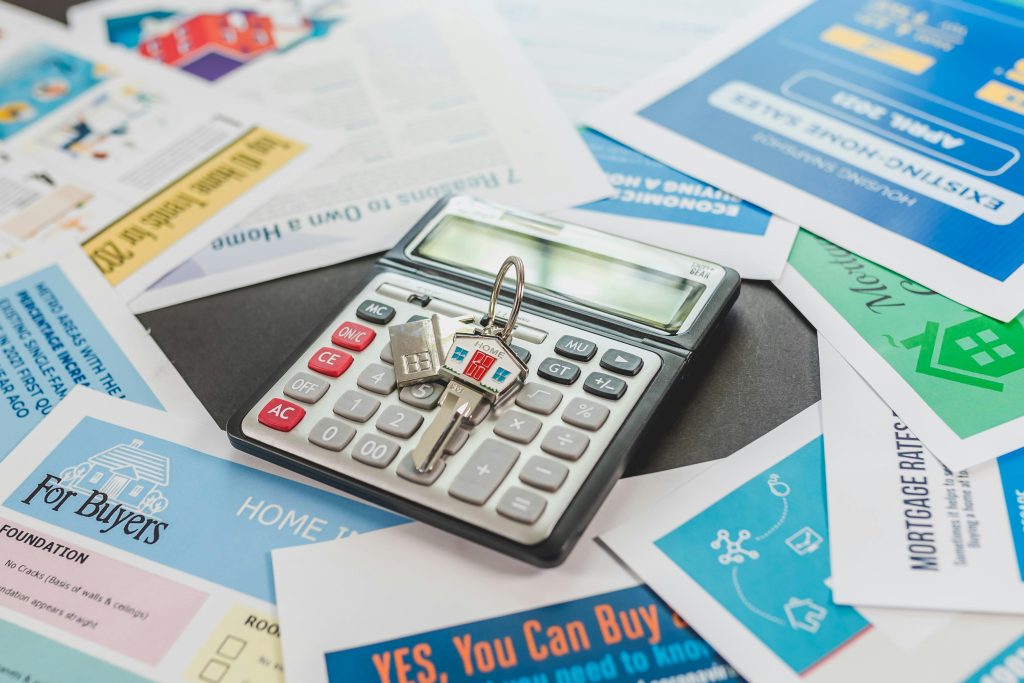Introduction
Cash flow is the lifeblood of real estate investing. It’s the difference between income earned and expenses paid—the number that tells you whether a property is feeding your wallet or draining it. Successful investors don’t rely on guesswork; they forecast cash flow carefully before making a purchase and continue to refine projections as market conditions shift.
In 2025, with rising interest rates, inflation-driven expenses, and evolving tenant expectations, accurate cash flow forecasting has never been more important. Done right, it helps landlords avoid costly surprises, secure financing, and make smarter portfolio decisions.

In this first half, we’ll break down the fundamentals of forecasting cash flow for investment properties—what it is, why it matters, the key components of income and expenses, and the step-by-step process for building realistic projections.
1. What Is Cash Flow Forecasting in Real Estate?
Cash flow forecasting is the process of estimating how much money will flow into and out of an investment property over a given period—typically monthly or annually.
- Positive cash flow: Income exceeds expenses.
- Negative cash flow: Expenses outpace income (a warning sign).
Unlike a simple “rent minus mortgage” calculation, true forecasting accounts for vacancies, repairs, taxes, and market shifts.
2. Why Cash Flow Forecasting Matters
2.1 Investment Decision-Making
- Determines whether a property is worth acquiring.
- Helps compare multiple properties side by side.
2.2 Financing & Lending
- Lenders often require detailed cash flow projections.
- Strong forecasts improve access to loans and better interest rates.
2.3 Portfolio Management
- Forecasts guide whether to hold, refinance, or sell.
- Anticipates when reserves may need boosting.
2.4 Risk Mitigation
- Prepares landlords for downturns, vacancies, or unexpected repairs.
3. Core Components of Cash Flow
Forecasting begins with two buckets: income and expenses.
3.1 Income
- Gross Rental Income: Expected monthly rent multiplied by occupancy rate.
- Other Income: Parking fees, storage, laundry, pet rent, utility reimbursements.
- Vacancy Allowance: Subtract expected vacancy rate (e.g., 5–10%).
3.2 Expenses
- Mortgage Payments: Principal + interest.
- Property Taxes: Annualized and divided monthly.
- Insurance: Hazard, liability, flood, etc.
- Property Management Fees: Typically 8–12% of rental income.
- Maintenance & Repairs: Routine (landscaping) and unexpected (plumbing).
- Capital Expenditures (CapEx): Big-ticket items like roof replacement.
- Utilities: If not tenant-paid.
- HOA or Condo Fees: For multi-unit or shared spaces.
- Miscellaneous: Marketing, legal, compliance costs.
4. Step-by-Step Process for Forecasting Cash Flow
Step 1: Estimate Gross Income
- Use market rent data from comps or rental platforms.
- Adjust for property-specific features (new appliances, location advantages).
Step 2: Apply Vacancy Rate
- Conservative forecasts assume 5–10% vacancy.
- Example: $2,000 rent × 12 months = $24,000. With 5% vacancy → $22,800 effective income.
Step 3: Subtract Operating Expenses
- Calculate monthly or annual totals for taxes, insurance, maintenance, etc.
- Rule of thumb: 50% of rental income goes to operating expenses (the “50% Rule”), but refine with actuals.
Step 4: Deduct Financing Costs
- Principal + interest payments on mortgage.
- If adjustable-rate, model scenarios with rising rates.
Step 5: Factor in Reserves and CapEx
- Allocate for future large repairs (roof, HVAC, appliances).
- Many investors set aside $250–$500 per unit annually.
Step 6: Arrive at Net Cash Flow
Net Cash Flow=Effective Rental Income−(Operating Expenses+Debt Service+Reserves)\text{Net Cash Flow} = \text{Effective Rental Income} – (\text{Operating Expenses} + \text{Debt Service} + \text{Reserves})Net Cash Flow=Effective Rental Income−(Operating Expenses+Debt Service+Reserves)
5. Tools & Methods for Forecasting in 2025
5.1 Spreadsheet Models
- Excel or Google Sheets with customizable assumptions.
- Easy to update for different scenarios.
5.2 Real Estate Software
- Tools like Stessa, Buildium, or DealCheck automate income/expense tracking.
- AI-powered forecasting increasingly integrates with property management platforms.
5.3 PropTech Enhancements
- IoT devices feed real-time data on energy costs, reducing guesswork.
- AI-driven market analytics predict rental growth rates by neighborhood.
5.4 Scenario Analysis
- Model best-case, worst-case, and base-case scenarios.
- Example: High vacancy (10%) vs. low vacancy (3%) projections.

6. Example Cash Flow Forecast (Single-Family Rental)
Assumptions:
- Monthly rent: $2,000
- Vacancy rate: 5%
- Mortgage (P+I): $1,000/month
- Taxes: $250/month
- Insurance: $100/month
- Maintenance/CapEx: $150/month
- Property management: $160/month (8%)
Forecast:
- Gross Income: $24,000/year
- Less Vacancy: $1,200 → Effective Income = $22,800
- Expenses (taxes + insurance + management + maintenance): $7,920
- Debt Service: $12,000
- Net Cash Flow: $2,880/year ($240/month).
This shows the property is cash-flow positive, though slim margins highlight the importance of accuracy.
7. Advanced Forecasting Strategies
7.1 Sensitivity Analysis
- Stress-test assumptions by tweaking variables like vacancy rate, rent growth, and maintenance costs.
- Example: What happens if vacancy jumps from 5% to 10%? A $240/month cash flow might drop to near zero.
7.2 Monte Carlo Simulations
- Use statistical models to run hundreds of scenarios based on probability distributions.
- Provides a confidence interval instead of a single outcome.
7.3 Time-Phased Forecasting
- Break forecasts into short-, medium-, and long-term windows:
- Year 1–2: Stabilization and lease-up.
- Year 3–5: Expected rent growth and capital expenditures.
- Year 6+: Major system replacements.
7.4 Inflation Adjustments
- Factor in rising costs of labor, insurance, and utilities.
- Tie rent growth assumptions to local CPI or rental market indexes.
7.5 Exit Strategy Planning
- Model cash flow through potential sale or refinance events.
- Includes equity build-up through amortization and appreciation.
8. Risk Management in Cash Flow Forecasting
8.1 Vacancy Risks
- Maintain conservative vacancy assumptions (7–10% in volatile markets).
- Offset with marketing budgets and tenant retention strategies.
8.2 Unexpected Maintenance
- Reserve funds for sudden expenses like roof leaks or plumbing failures.
- Many investors use the 1% Rule: 1% of property value annually for maintenance reserves.
8.3 Interest Rate Fluctuations
- Adjustable-rate mortgages (ARMs) introduce volatility.
- Model rising rates to ensure cash flow remains positive.
8.4 Tenant Behavior
- Non-payment or evictions can derail forecasts.
- Credit screening and rent insurance reduce exposure.
8.5 Regulatory Risks
- Rent control or property tax changes can disrupt projections.
- Stay updated on local legislation affecting landlord-tenant laws.
9. Multi-Property and Portfolio Forecasting
9.1 Consolidated Forecasting
- Aggregate all property cash flows into a portfolio view.
- Smooths volatility—losses in one property offset by gains in another.
9.2 Cross-Subsidization Risks
- Beware of using strong cash flow from one property to cover chronic losses in another.
- Maintain separate reserves per property, even if forecasting collectively.
9.3 Diversification Benefits
- Spreading across property types (single-family, multifamily, commercial) reduces income volatility.
- Geographic diversification hedges against local economic downturns.
9.4 Portfolio-Level Metrics
- Cash-on-Cash Return (CoC) across portfolio.
- Debt Service Coverage Ratio (DSCR) to satisfy lenders.
- Net Operating Income (NOI) as the base for portfolio valuation.
10. Tax Considerations in Cash Flow Forecasting
10.1 Depreciation
- Depreciation shields taxable income but doesn’t affect actual cash flow.
- Factor into after-tax return calculations.
10.2 Interest Deductions
- Mortgage interest remains deductible, lowering taxable income.
10.3 1031 Exchanges
- When modeling exit strategies, consider deferring capital gains through a 1031 exchange.
10.4 State & Local Taxes
- Local property tax fluctuations are among the biggest swing factors in cash flow forecasting.
10.5 Passive Activity Loss Rules
- U.S. investors must consider whether losses can offset other income.
11. Case Studies
11.1 Small Landlord, Single-Family Property
- Forecasted $240/month net cash flow.
- Unexpected HVAC replacement ($6,000) wiped out annual gains.
- Lesson: Conservative reserve planning is essential.

11.2 Multifamily Investor (12 Units)
- Applied 10% vacancy assumption despite market average of 5%.
- When a downturn hit, forecasts remained accurate—preserving investor trust.
11.3 Institutional Portfolio (200 Units Across 3 States)
- Used Monte Carlo simulations to forecast rent growth under multiple economic scenarios.
- Allowed more precise capital allocation and prevented overleveraging.
12. Actionable Checklist
- Forecast income with vacancy allowances.
- Itemize operating expenses realistically (don’t rely only on rules of thumb).
- Include reserves for maintenance and CapEx.
- Stress-test with sensitivity and scenario analysis.
- Consolidate multi-property forecasts but track property-level performance.
- Factor in taxes, depreciation, and financing impacts.
- Revisit forecasts annually or after major market shifts.
Conclusion
Forecasting cash flow for investment properties isn’t just a math exercise—it’s risk management, strategic planning, and financial storytelling rolled into one. Accurate projections help landlords and investors understand when a property is viable, when reserves are sufficient, and when it’s time to scale or exit.
In 2025, advanced tools like AI-driven PropTech, scenario modeling, and predictive analytics make it easier than ever to build reliable forecasts. Yet the fundamentals remain the same: be conservative with income, realistic with expenses, and proactive with reserves.
Done right, cash flow forecasting empowers investors to grow sustainable portfolios while avoiding the financial pitfalls that derail many landlords.
FAQs
1. How often should I update my cash flow forecasts?
At least annually, and immediately after major changes (new tenants, refinancing, or significant repairs).
2. Should I use rules of thumb or detailed expense tracking?
Rules of thumb are good starting points, but detailed expense tracking produces more accurate forecasts.
3. Can AI tools improve forecasting?
Yes. Modern PropTech uses AI to model rent growth, predict maintenance costs, and optimize reserves.
4. How conservative should vacancy assumptions be?
Use 5–10%, depending on market volatility and tenant demographics.
5. Do I need separate reserves for each property?
Yes. While portfolios can be modeled collectively, each property should maintain its own contingency fund.
6. What’s the biggest mistake new investors make in forecasting?
Underestimating maintenance and capital expenditures, which often exceed initial expectations.

